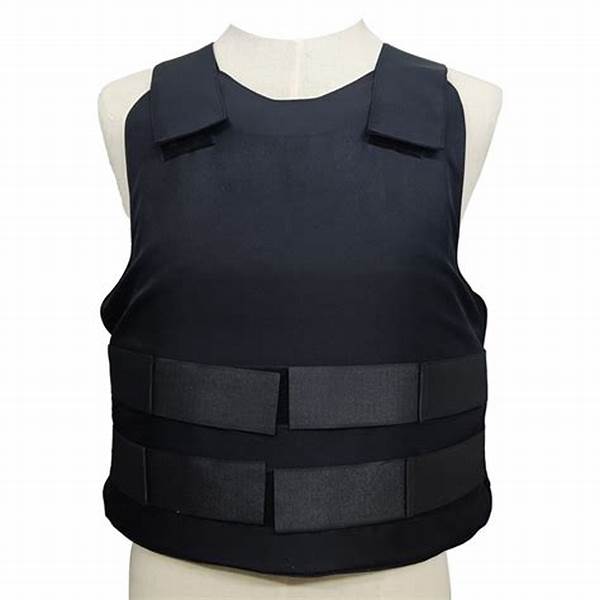In recent years, advancements in materials science have facilitated significant strides in the development of lightweight ballistic armor. This progress is driven by the necessity for enhanced protection without compromising mobility, particularly for military personnel and law enforcement agencies. Researchers and manufacturers continue to innovate, looking for ways to improve performance while reducing the overall weight of armor systems.
Recent Advancements in Lightweight Ballistic Armor
The field of lightweight ballistic armor developments has been witness to remarkable innovations, particularly in material composition. Researchers have focused their efforts on integrating advanced fibers and composite materials, such as aramid fibers, ultra-high-molecular-weight polyethylene (UHMWPE), and ceramic composites. These materials offer significant strength-to-weight advantages. The integration of nanotechnology has further propelled these developments, with nanoparticles enhancing the ballistic resistance and durability of armor systems. Additionally, the use of computer-aided design (CAD) and modeling technologies has refined the design processes, allowing for tailored armor solutions that provide maximum protection while minimizing bulk.
The advent of 3D printing technology has also contributed to innovations in lightweight ballistic armor developments. This technology has enabled the production of complex, customized armor configurations that enhance flexibility and effectiveness. Moreover, recent breakthroughs in adhesive technologies are facilitating stronger bonding of composite layers, ensuring that armor retains integrity under high-stress conditions. These pioneering efforts underscore a commitment to providing personnel with advanced protection solutions that do not hinder operational efficiency.
Material Innovations in Lightweight Ballistic Armor
1. Aramid Fibers Integration: Incorporating aramid fibers into armor systems has been a key component of lightweight ballistic armor developments. Known for their high tensile strength, these fibers contribute significantly to reducing armor weight.
2. UHMWPE Advances: The utilization of ultra-high-molecular-weight polyethylene has transformed lightweight ballistic armor developments, as this material offers exceptional strength and reduces weight by up to 50% compared to traditional materials.
3. Ceramic Composite Applications: Ceramics are crucial in reinforcing lightweight ballistic armor developments, providing robust protection against high-velocity projectiles without adding unnecessary weight.
4. Nanotechnology Utilization: The infusing of nanoparticles into armor materials represents a cutting-edge shift within lightweight ballistic armor developments, enhancing durability and impact resistance.
5. 3D Printing Innovations: Lightweight ballistic armor developments have been significantly advanced by 3D printing, enabling bespoke fitment and innovative layer structuring that optimizes protection.
Technological Integration in Armor Design
The integration of advanced technologies plays a pivotal role in current lightweight ballistic armor developments. Computer-aided design (CAD) systems have revolutionized the way armor is conceptualized and tested, allowing for precise simulations of ballistic events. This technological edge ensures that armor not only provides needed protection but is also ergonomic and fit-for-purpose. The advent of AI-driven analytics further optimizes armor development, analyzing vast datasets to refine designs and predict performance outcomes under various scenarios. Consequently, technological integration is paving the way for armor solutions that are both practical and adaptive to evolving threats.
The role of adhesive technology in lightweight ballistic armor developments is also noteworthy. Innovations in this area have enabled more effective layer bonding, crucial for maintaining the structural integrity of composite materials under impact. These adhesives are designed to withstand extreme temperatures and pressures, ensuring that armor retains its protective capabilities over time. This development has been instrumental in the ongoing quest to enhance the performance of lightweight ballistic armor while ensuring wearers remain agile and responsive in high-pressure environments.
Challenges and Solutions in Armor Production
The realm of lightweight ballistic armor developments is not without its challenges. One primary concern is finding the balance between weight and protection level. Overcoming this challenge necessitates continuous material innovation. Certain materials, while incredibly protective, may not provide the weight reduction required. Thus, research has been focused on hybrid materials that combine the best properties of various substances.
Cost remains a significant factor in the production of lightweight ballistic armor. Advanced materials and manufacturing processes tend to drive prices upward, presenting a barrier for widespread adoption across military and law enforcement agencies. In response, industry stakeholders are investing in scalable manufacturing techniques that leverage economies of scale. This focus aims to make lightweight ballistic armor developments more accessible without compromising on quality or performance.
Future Directions in Ballistic Armor
Looking forward, the field of lightweight ballistic armor developments is set to advance, with a strong emphasis on sustainability. Researchers are investigating eco-friendly materials that do not sacrifice performance, aiming to reduce environmental impact while maintaining high standards of protection. The next generation of armor is expected to incorporate smart technologies, such as embedded sensors that offer real-time data on the condition of the armor and potential breaches.
Personalization is anticipated to be part of future developments, allowing for personalized armor solutions tailored to individual ergonomic and protection requirements. The reality of battlefield conditions necessitates armor that adapts to the wearer’s needs, ensuring optimal functionality. These anticipated advancements promise to revolutionize the concept of ballistic protection, making it more effective and user-oriented.
Conclusion
In summarizing the trajectory of lightweight ballistic armor developments, it is evident that technological advancement and material innovation have spearheaded transformative changes. From integrating sophisticated materials like aramid fibers and ceramics to employing technologies such as CAD and AI, the field is continuously evolving. These developments underscore an unwavering commitment to providing practical, lightweight solutions that do not inhibit operational capabilities.
Looking ahead, it is clear that the sphere of lightweight ballistic armor developments will continue to innovate. Emerging trends point towards sustainable practices, smart technologies, and personalization, all aimed at enhancing protection and usability. As the challenges of protection needs grow ever more complex, the commitment to advancing lightweight ballistic armor ensures that safety and effectiveness remain at the forefront of defense solutions.





